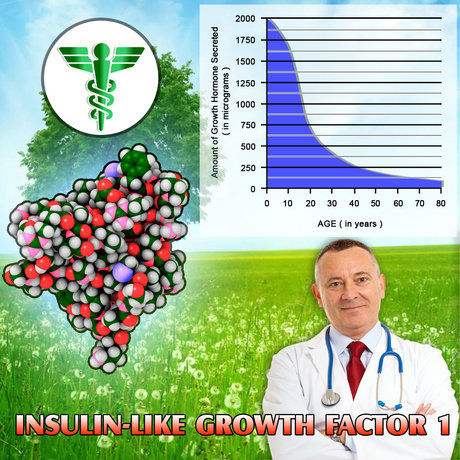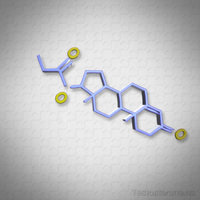 You care for your health by exercising, eating clean, prioritizing sleep, not smoking, and several other healthy habits.
You care for your health by exercising, eating clean, prioritizing sleep, not smoking, and several other healthy habits.
However, all of these actions, as beneficial as they are, will not maintain your continued good health without considering the problem of out toxic environment and what you can do to minimize your exposure to toxins.
Despite the increase in jobs and the “clean energy” that natural gas extraction has brought us, many skeptics think pulling this gas out of the ground is too risky for us to do.
Not only do the extraction pads deplete and fragment the forest, and explosions can kill workers and wildlife, but the way the extraction is done can lead to water pollution with a myriad of harmful chemicals.
This polluted water travels into our water systems and drinking water, causing issues such as impotence and fertility problems in men, as evidenced by the study discussed in this article. There are many other concerns with natural gas extraction and its effect on the environment and people's health, but our focus here is its effect on testosterone levels in men.
Fracking Causes Increased Risk of Impotence and Fertility Issues in Men
Another term for natural gas extraction is hydraulic fracturing, which is how the gas is extracted from the rock. The method extracts oil and gas by forcefully injecting water, industrial chemicals (solvents and biocides), and sand into the deep shale rock.
This creates pressure that causes the rock to crack and release the wanted oil or gas. This water/chemical mixture has been a significant concern for many people, especially those who live near hydraulic fracturing sites and drink well water.
New research, presented at the Endocrine Society’s annual meeting, focused on how hydraulic fracturing impacts the male reproductive system. The research team focused on testosterone.
Initially, the scientists had to identify the essential chemicals used in the water/chemical mixture that could affect our hormones or the endocrine system in general. They zeroed in on the fracking industry in California because the companies in that state are more transparent about what chemicals they use.
 The Connection Between Fracking Pollutants and Hormones
The Connection Between Fracking Pollutants and Hormones
The study used a two-step process to see if there was any connection or correlation between the pollutants from hydraulic fracturing and the sex hormone testosterone.
First, the scientists used a computer program to screen hundreds of chemicals emitted into the air through fracking.
Out of these 100s of chemicals, only 60 were determined to capable of having an effect on testosterone levels. This was determined by the fact that they were the only chemicals whose molecular structures could bond to male hormone receptors chemically.
The others were simply too big to bind. A second program was utilized to filter the 60 chemicals to eventually find five that can disrupt the receptors and potentially the entire endocrine system.
After finding the five chemicals of intrigue, the chemicals were tested for their impact on cell cultures, 96 total plates of cell cultures, to be exact. FYI, studying effects on cell cultures tells us more about what these effects would do to a developing fetus than to an adult human. A limitation, but at least we can glean some information from the research. And chemicals appeared to have a significant disruption.
Genapol X-100 Disrupts Male Sex Hormone Receptors
The chemical is Genapol X-100, a surfactant, or cleaning agent, used in many of California’s fracking operations. Genapol X-100 appears to disrupt male sex hormone receptors significantly.
According to lead author Phum Tachachartvanich, from the University of California at Davis, “...we showed that this compound can disrupt male sex hormone receptors, which is the androgen receptor.”
 Unfortunately, we do not know how much of Genapol X-100 turns up in human bodies exposed to the water near fracking sites or workers on the actual site. They cannot say whether or not fracking is genuinely harming the male endocrine system or not.
Unfortunately, we do not know how much of Genapol X-100 turns up in human bodies exposed to the water near fracking sites or workers on the actual site. They cannot say whether or not fracking is genuinely harming the male endocrine system or not.
However, we do know that any disruption to the androgen receptors can cause infertility, reduced sperm counts, and testicular cancer. Low testosterone is also a severe problem for many men, leading to low sex drive and erectile dysfunction, as well as depression.
We also know that pollutants from hydraulic fracturing are contaminating the air around drilling sites, exposing the residents and workers nearby and threatening their health.
It is also highly suspect that these pollutants are getting into the water supply and impacting not only humans but aquatic life as well.
Endocrine Disruptors, Like Genapol X-100, Can Cause Permanent Damage to a Developing Fetus
The research does definitely show that exposure to Genapol X-100 by a developing baby, especially a male baby, can have serious consequences. Previous research shows that endocrine disruptors (or EDCs) can permanently damage a child’s reproductive system if exposed in the womb. Developing babies are usually the most sensitive to environmental harm, and if a pregnant woman is exposed to EDCs, then the fetus is too.
The exposure could result in the child having only one testicle or, if severe, even undescended testicles.
 The lead author commented, “One major limitation is that what we’ve seen in vitro—in cell culture—might not be seen in humans, so this is the major limitation of this study. This is just the early stage of the study. You have to do more research to confirm if this chemical exposure can really affect androgen receptors in humans.”
The lead author commented, “One major limitation is that what we’ve seen in vitro—in cell culture—might not be seen in humans, so this is the major limitation of this study. This is just the early stage of the study. You have to do more research to confirm if this chemical exposure can really affect androgen receptors in humans.”
Even though the results of this study are limited, it’s probably a good idea to avoid chemicals like Genapol X-100 as much as possible. If you live near a fracking site, consider getting your water and air tested around your home.
The best thing might even be to move! We know that pollutants are getting into the air, and we also know that fracking lowers the birth weights of newborns. If you are considering starting a family or having a pregnant wife, it’s time to consider whether the potential for exposure is worth it.
Even if you do not live near a fracking site, testing your water for any unwanted contaminants would be a good idea just to be safe. The saying, “Your health is wealth,” is one always to remember!
Consider getting your testosterone levels checked regularly, especially if you are over the age of 30. It’s super easy to do so! Contact us to get started and know that you are on top of your hormone health.
Reference
Contact Us For A Fast And Professional Response

- Sermorelin — HGH Injections Versus Sermorelin and Testosterone Therapy Programs [Last Updated On: February 20th, 2025] [Originally Added On: September 20th, 2020]
- The scientific research benefits of testosterone treatment (TRT) [Last Updated On: November 24th, 2024] [Originally Added On: September 26th, 2020]
- Low-T Associated with Increased Risk of Atherosclerosis in Men with Type-2 Diabetes [Last Updated On: August 30th, 2024] [Originally Added On: October 20th, 2020]
- Health Changes Associated with Low Testosterone and Andropause [Last Updated On: October 29th, 2024] [Originally Added On: November 16th, 2020]
- Five Sports for Living Longer – Life Extension Through Sport [Last Updated On: March 16th, 2025] [Originally Added On: December 2nd, 2020]
- Covid-19 Mortality Risk Correlates With Low-T [Last Updated On: April 16th, 2025] [Originally Added On: December 17th, 2020]
- New Research Explores How Testosterone Influences Your Popular or Unpopular Opinions [Last Updated On: January 16th, 2025] [Originally Added On: February 22nd, 2021]
- Primary Versus Secondary Hypogonadism [Last Updated On: January 5th, 2025] [Originally Added On: March 15th, 2021]
- Testosterone Cypionate Information [Last Updated On: November 16th, 2024] [Originally Added On: May 5th, 2021]
- Testosterone Replacement Therapy May Help Cure Non-Alcoholic Fatty Liver Disease [Last Updated On: January 13th, 2025] [Originally Added On: June 5th, 2021]
- Can Low Testosterone Be Cured? [Last Updated On: January 17th, 2025] [Originally Added On: September 5th, 2021]
- Low Testosterone (Low T) [Last Updated On: September 7th, 2024] [Originally Added On: September 7th, 2021]
- Low Testosterone – A Possible Link to Rheumatoid Arthritis Risk? [Last Updated On: January 21st, 2025] [Originally Added On: February 12th, 2022]
- The (Surprising) Necessity for Estrogen in Men [Last Updated On: January 22nd, 2025] [Originally Added On: March 1st, 2022]
- Anti-Aging Benefits from Hormone Balance [Last Updated On: January 18th, 2025] [Originally Added On: March 22nd, 2022]
- Male Testosterone Levels Have Dropped by Half - Fact or Myth? [Last Updated On: November 1st, 2024] [Originally Added On: May 14th, 2022]
- Tlando is on the Market – Oral Testosterone Replacement Therapy [Last Updated On: January 20th, 2025] [Originally Added On: June 9th, 2022]
- Tlando Low-T Treatment - A Safe and Effective Pill for Testosterone Deficiency [Last Updated On: November 8th, 2024] [Originally Added On: June 25th, 2022]
- Fatigue and Lack of Sexual Interest: Could it be Male Menopause? [Last Updated On: January 25th, 2025] [Originally Added On: June 27th, 2022]
- The Power of Testosterone—Improving Memory in Diabetics [Last Updated On: November 7th, 2024] [Originally Added On: July 12th, 2022]
- Kyzatrex Achieves FDA Approval—A Brand New Oral Testosterone Treatment [Last Updated On: November 9th, 2024] [Originally Added On: August 13th, 2022]
- How Testosterone and Social Context Influence Behavior [Last Updated On: November 22nd, 2024] [Originally Added On: December 11th, 2022]

















